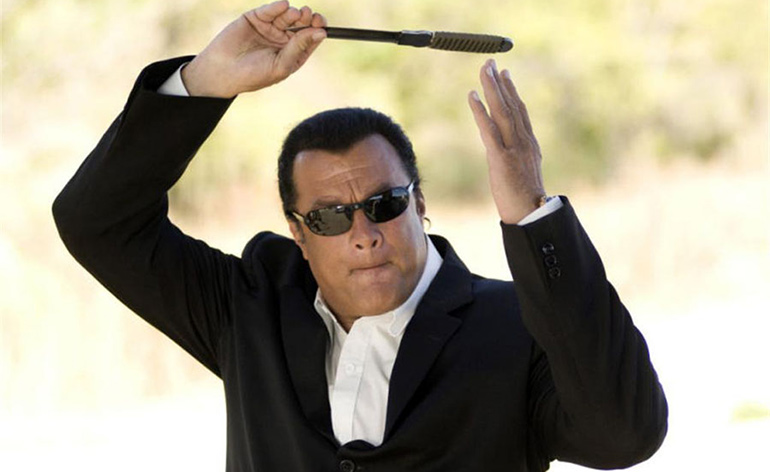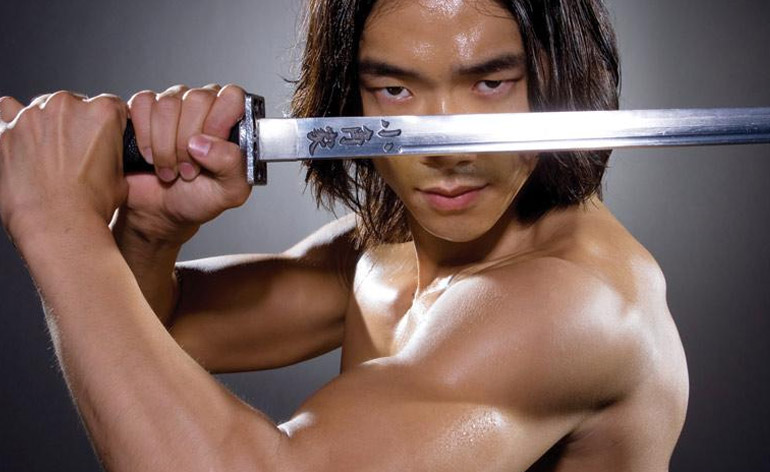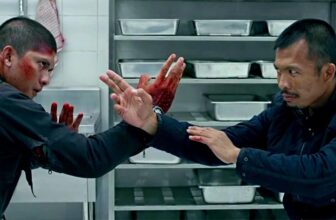
This month we take a look at Wushu, the national sport of China. “Wushu” is a Mandarin word meaning “martial art”. “Kung fu” is a Chinese term often used to refer to Chinese martial arts. Its original meaning refers to a person’s expertise in any skill, not necessarily martial arts, but it is generally understood to refer to Chinese martial arts in the English language. Traditional wushu methods and routines are usually more grounded in form and relate more closely to training and practising fighting techniques. Modern or contemporary wushu is more akin to gymnastics or dance performance. It is often performed with great speed and agility featuring many spectacular jumping kicks, twisting aerial movements, acrobatics and weapons techniques.
Wushu Highlights:
Origins
With the founding of the Republic of China in 1912, Chinese martial arts were starting to be recognised as a means to promote national pride and build a strong and healthy nation.
In 1928, the National Government established the Central Guoshu Academy (Zhongyang Guoshuguan). They published training manuals, built a training academy, two national examinations were organised, demonstration teams travelled overseas and numerous martial arts associations were formed throughout China and in various Chinese communities abroad.
The term Guoshu, meaning “national art”, rather than the colloquial term “gongfu” was introduced by the Kuomintang (National Party) in an effort to more closely associate Chinese martial arts with national pride rather than individual accomplishment. Open challenges, duels, or any kinds of public fighting match, were declared illegal. The government replaced these duels with state run national competitions. Starting in 1932, a series of provincial and national competitions were organised by the Republican government to promote Chinese martial arts.
In 1936 at the 11th Olympic Games in Berlin, a group of Chinese martial artists demonstrated their art to an international audience for the first time.
Wushu at the 1936 Olympics:
Following the Communist victory and establishment of The People’s Republic of China in 1949, the All China Sports Federation was created and extensive discussions began concerning how physical culture could best serve the state. By 1951, all private martial arts schools were labelled “feudalistic” and closed. The following year the State Physical Culture and Sports Commission was created and a number of new regulations regarding the practice of martial arts were introduced. Instructors could no longer refer to themselves as “Sifu”, meaning “Master”, and “initiation ceremonies” were declared illegal. Instructors were now referred to as “coaches”, or “Laoshi” meaning “teacher”.
Throughout the purge of the Red Guard, those kung fu masters that could, fled overseas, whilst the remainder went into hiding or suffered harsh reprisals. Traditional kung fu continued to flourish overseas, and Chinese cultural traditions became stronger in some expat Chinese communities than back home in mainland China.
In 1959 it was announced that a state controlled martial arts program had been created that no longer recognised styles or systems. Instead, all martial arts were divided into five basic categories: “Changquan”, or “Long Fist”, referring to all empty hand techniques, Daoshu (broadsword), Jianshu (straight sword), Gunshu (staff) and Qiangshu (spear). After some protests, a category referred to as Nanquan or “South Fist” was also introduced to represent the martial arts of Southern China. This state- controlled martial arts program was the basis for what is today referred to as “contemporary wushu”.
Official Promo:
In 1974, the Chinese National Wushu Team performed for President Richard Nixon in the gardens of the White House. An 11 year old Jet Li, already an all-round national champion, gave a changquan demonstration. Afterwards, Nixon asked if he would like to be his personal bodyguard. Li replied, “I don’t want to protect any individual. When I grow up, I want to defend my one billion Chinese countrymen!”
Jet Li meets President Nixon:
Wushu is now an Olympic-recognised sport and was shortlisted for inclusion in the 2020 games. The International Wushu Federation (IWUF), the official governing body, hopes to lobby for the inclusion of wushu in the 2024 Summer Olympics.
Techniques
The Chinese Communist Party’s political agenda had a direct impact upon how the martial arts were taught and practiced. Initially the party actively discouraged the study of fighting applications and the practice of sparring, claiming that self defence skills were no longer necessary in the new society and stressing that “comrades should not fight comrades”. Consequently, many of those practicing contemporary wushu frequently did not know the practical application of the martial arts techniques that they were performing.
World Champion Jade Xu teaches the Butterfly Kick:
While contemporary wushu is based upon traditional martial arts, it is first and foremost a program designed for performance in order to promote health, discipline and exercise among the Chinese people. Gradually, many traditional techniques were removed and in the name of athleticism, performance postures and techniques were
altered to make them more aesthetically pleasing, with the emphasis on acrobatic moves, such as the butterfly twist and free cartwheel.
Originally, international wushu competitions most often used compulsory routines, while high-level competitions in China most often used individual routines. However, after the 2003 Wushu World Games in Macau, it was decided to opt for individual routines in international competition with nandu (“difficulty movements”), that accumulated a score of up to a maximum of 10. There is some controversy concerning the inclusion of nandu in wushu as many of the movements have become less “martial” and more gymnastic.
Ditanquan (Ground Tumbling Boxing) performed by Master Lang Rong Biao:
Competition wushu routines (Taolu) can be performed individually or in “Duilian” events, where two or more participants “duel” against each other in a choreographed fighting set. There is also a synchronised group event known as “Jiti”.
Duilian at the World Championships:
All wushu routines can be performed with or without weapons. The most popular weapons are the Dao (sabre or broadsword), Gun (cudgel), Jian (straight sword) and Qiang (spear), although many of the other eighteen weapons of Chinese martial arts can be used too.
One of China’s most successful champions Yuan Wenqing performing Gunshu:
Sanshou, also known as Sanda, meaning “unbound or free hand”, is a Chinese combat sport and self defence system that is based on traditional kung fu. It was originally started by the Chinese Nationalist Party in the 1920’s as a way to train the Chinese military for close quarter combat and physical fitness. Training was based on various
styles of traditional kung fu with many hand-to-hand combat techniques, such as holds, grappling, and takedowns. Sanda bouts take place on a “Lei Tei”, a raised platform or stage, just as traditional challenge matches had done in the past. Modern sanda was introduced to civilians and developed into a sport by the China National Sports Committee during the 1970’s. Protective equipment was introduced including gloves, headguards and body armour. A set of rules were established to allow for a wide array of full contact punching, kicking, takedowns and throws, taken from traditional martial arts applications. The use of knees, elbows, chokes, joint locks and submission holds was excluded. Officially regulated sanda competition began in 1979 and it has now become a worldwide spectator sport since its introduction at international wushu competitions in 1988.
Sanda uses punches, kicks, sweeps and throws:
The extravagant nature of many wushu techniques have made them a popular feature of many martial arts movies. Films such as “The Shaolin Temple”, “Once Upon a Time in China”, “Fist of Legend”, “Iron Monkey”, “Hero” and “Crouching Tiger, Hidden Dragon” have drawn heavily on wushu skills for their fighting and weapons choreography. This highly stylised form of screen fighting eventually found its way into blockbuster Hollywood movies, most notably in “The Matrix”, “Charlie’s Angels”, “Star Wars Episode I The Phantom Menace” and “Kill Bill”.
Practitioners you may know
Probably the most famous wushu performer is film star Jet Li. As a member of the Beijing Wushu Team coached by Wu Bin, he was a multiple all-round (open hand, short weapon and long weapon) Chinese national champion. Having starred to great acclaim in the 1982 movie “The Shaolin Temple”, he retired from competitive wushu at the age of 19. He went on to find fame as Wong Fei-hung in the “Once Upon a Time in China” movies, and became a worldwide star after appearing as the villain in “Lethal Weapon 4”. Li made the film “Fearless”, based on the life of the real-life wushu master Huo Yuanjia, to express his personal martial arts philosophy. Thanks to his wushu training, Li has a reputation for his lightning speed and picking up choreographed fights almost instantly.
Jet Li demonstrates his all-round wushu skills in The Shaolin Temple:
Jet Li expressed his personal wushu philosophy in the movie Fearless:
Asian action star Donnie Yen, originally learned wushu from his mother, the renowned coach Bow Sim-mark. When he was a teenager, she sent him to the Beijing Wushu Team where he trained for two years. The famous martial arts choreographer Yuen Woo-ping spotted him and he earned his first leading acting role at the age of 19 in the 1984 movie “Drunken Tai Chi”. Yen has gone on to find fame in films such as “Iron Monkey”, “Hero” and the “Ip Man” movies.
Donnie Yen versus Jet Li in Hero:
Actress and martial artist Cynthia Rothrock was something of a pioneer for Westerners learning wushu. At a time when very few Caucasian men, let alone women, were able to train in China, Cynthia travelled to Chengdu to further her studies in Eagle Claw, Northern Shaolin and wushu. She became one of the few Western martial artists to have a prolific career in Hong Kong action films during the 1980’s. Her first starring role was alongside Michelle Yeoh in “Yes Madam/Police Assassins”, the success of which led to leading roles in “Millionaires Express”, “The Inspector Wears Skirts”, “China O’Brien” and “Righting Wrongs”.
Cynthia Rothrock was one of the first Westerners to learn wushu in China:
Yuen Woo-ping saw the potential in another Beijing Wushu Team member, Jacky Wu Jing, who had trained from the age of six. He got the chance to showcase his skills in the film “Tai Chi Boxer” aged 21. He has carved a notable career as a martial arts action star in the films “Fatal Contact”, “Invisible Target” and “Shaolin”. His performance opposite Donnie Yen in “SPL: Sha Po Lang” won him acclaim, and he features strongly in the sequel “SPL 2: A Time for Consequences”. He made his directorial debut with “Wolf Warriors” starring alongside Scott Adkins.
Jacky Wu Jing won acclaim for his role in SPL: Sha Po Lang aka KillZone
British wushu star Ray Park was an all-round European wushu champion, and one of the highest-ever placed non-Asian athletes at the World Championships. He went on to perform his martial arts skills in the films “Mortal Kombat Annihilation”, “X-Men” and the “G.I. Joe” movies. He most famously incorporated gunshu (cudgel) and daoshu (broadsword) techniques into the lightsaber fights as the villain Darth Maul in “Star Wars Episode I: The Phantom Menace”.
Ray Park incorporated wushu techniques into the lightsaber choreography:
Famous wushu athletes include Yuan Wenqing, one of the most successful and skilled all-round wushu competitors. He won countless gold medals in Chinese, World, and Asian Championships. He is a former Shanxi wushu team athlete trained by the coaches Pang Lin Tai and Zhang Ling Mei. A number of his routines became the official standard competition routines for a number of years until the nandu rules were introduced.
Yuan Wenqing’s routines became the standard:
Zhao Changjun was one of the best classical contemporary wushu legends of the 20th Century. His rivalry with Jet Li was legendary, losing first place in the men’s longfist in 1978. Legend says it was due to Zhao’s little finger being slightly off, resulting in a minuscule deduction that cost him the gold. After Jet Li left to become an actor, Zhao Changjun was left to dominate national Wushu competitions in the 80’s. It has been said that “the ’70s belonged to Jet, but the ’80s belonged to Zhao”. Trained both in traditional and contemporary wushu, Ditangquan, Gunshu and Daoshu are known as “Zhao’s Three Uniques”. He was also trained in traditional Cha quan, a uniquely Muslim traditional wushu style. Retiring in 1987, he now coaches in his own wushu school.
Zhao Changjun controversially came second to Jet Li in the 1978 All China Championships:
Zhao Changjun now runs his own wushu school:






